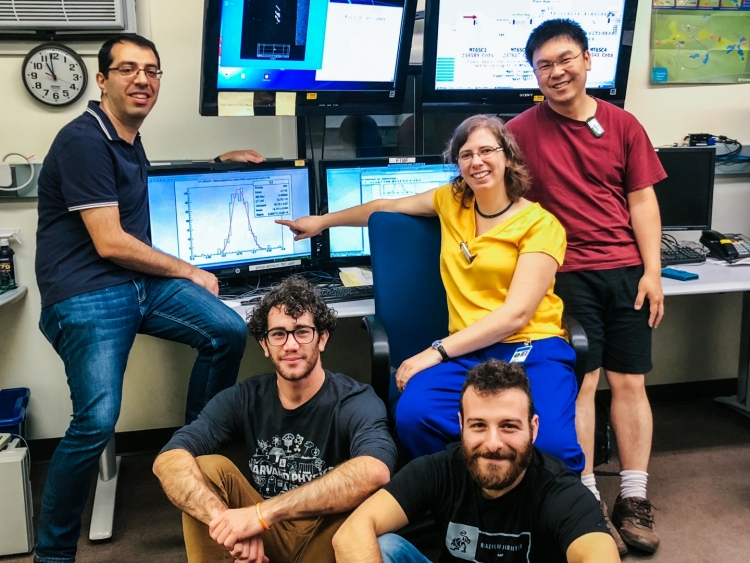
Soon after 2027, the LHC will enter the high luminosity era, known as HL-LHC, during which it is expected to deliver about 20 times more data than delivered up the end of Run 2.
In order to achieve such high luminosity, the LHC is going to use much more densely packed bunches of protons to increase the collision rate. When two such bunches cross one another, the total number of proton-proton collisions, known as pile-up, will reach 140-200, of which only one, at most, is likely to be interesting. The CMS detector has to observe the decay products of various particles produced in these collisions and work backwards to determine which collisions produced which particles. CMS was designed and built to cope with an average pile-up of around 25 interactions per crossing, with the proton bunches crossing inside CMS every 25 ns, where 1 ns (nanosecond) is one billionth of a second. In these conditions, information from the current detector was sufficient to identify charged particles from pile-up and exclude them from being associated with the interaction of interest. However, the much higher pile-up expected during HL-LHC will result in an increase in the spatial overlap of tracks and energy deposits from these extra collisions, reducing the ability of CMS to reconstruct correctly the tracks of interest. Thus, the CMS detector must be upgraded to keep its excellent performance in terms of efficiency, resolution, and background rejection for all final state particles and physical quantities.
The addition of precision timing information for tracks will provide CMS with an additional handle to reduce the effects of pile-up. This relies on the fact that the individual collisions within a bunch crossing are not simultaneous, but instead occur at slightly different times. This is because the bunches, which are a few centimeters in length, still take on order of a nanosecond to fully pass through each other even though they are traveling at nearly the speed of light. Most of the collisions within a bunch crossing occur within a time interval of 180-200 ps, where 1 ps (picosecond) is one trillionth of a second. A new dedicated detector for precision timing of charged minimum ionizing particles (MIPs), the MIP timing detector (MTD), is proposed by CMS to exploit the time spread of the collisions in a given bunch and provide additional capability to correctly associate tracks from charged particles to vertices.
The MTD is a hermetic detector that will surround the entire Outer Tracker and will measure the time-of-arrival of each charged particle with a time resolution of about 35 ps.
The proposed design and adopted technologies must meet a number of different technical requirements including radiation and magnetic field tolerance, low deadtime, high granularity (low occupancy), and affordable cost per unit area. The central barrel region of the MTD will be instrumented with crystal scintillators that produce large, rapidly rising light pulses when the particles passes through them. The light will be read out with silicon photomultipliers (SiPMs). The two end-cap components of the MTD will use Low Gain Silicon Detectors (LGADs) that provide an amplified signal of the ionization charge released by the charged particle crossing it.
The CMS physics program at the HL-LHC targets a wide range of studies, including precise measurements of the Higgs boson properties and direct searches for physics beyond the standard model (BSM). A very crucial measurement to be performed is the di-Higgs production, which will provide a direct measurement of the Higgs self-coupling. In addition, the improved track-time reconstruction opens whole new capabilities that will enable CMS to look for phenomena that are outside the capability of the current detector. These include enhanced searches for long-lived particles (LLPs), postulated in many extensions of the standrad model (SM). Heavy particles that travel a distance in the tracking volume and then decay into lighter standard model particles produce very delayed signals in the MTD. Time-of-flight between the collision vertex and the MTD can also be used to differentiate among low momentum charged hadrons, such as pions, kaons, or protons. This will provide new opportunities to study Heavy Ion collisions, where knowledge of the particle type is especially important.
A detailed technical design report of the MTD was submitted earlier this year and approved recently by the CERN Research Board. The successful tests of various technologies confirm the required performance and demonstrate that the addition of a timing layer will allow CMS to improve many physics analyses during the HL-LHC. The capabilities offered by the MTD, combined with other planned CMS upgrades will deepen our understanding of the validity of the SM and in particular, of the Higgs properties, enable searches for new long-lived particles and other BSM signals, and enhance our knowledge of the collisions of Heavy Ions.
- Log in to post comments

